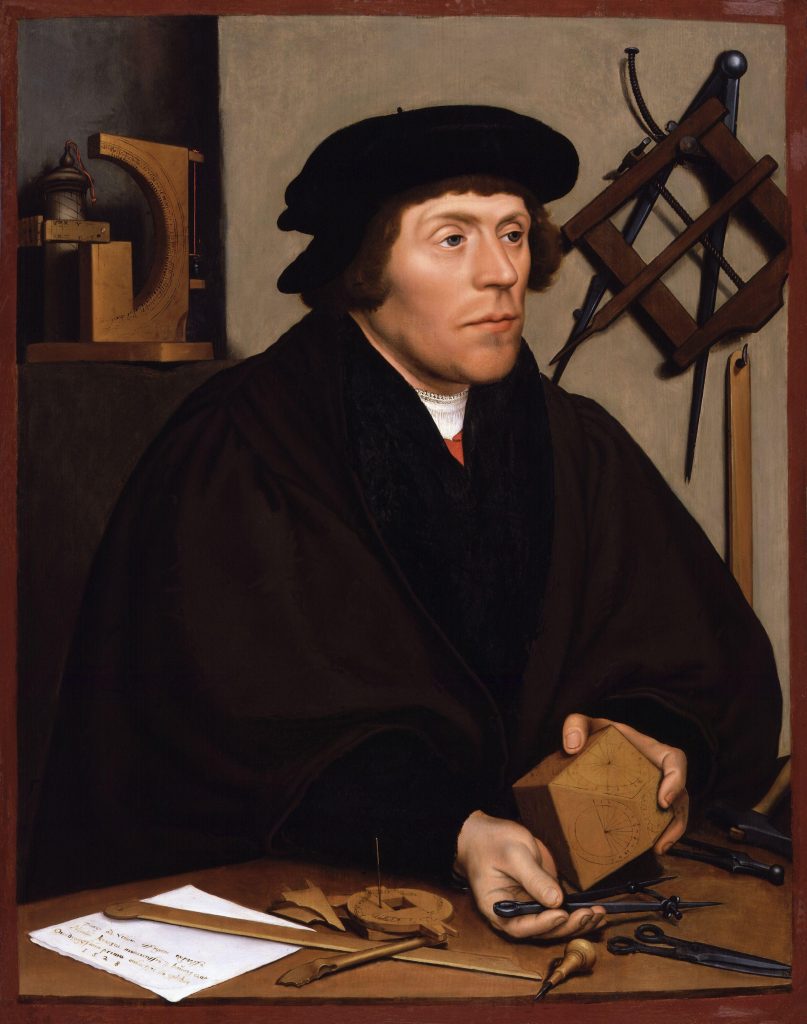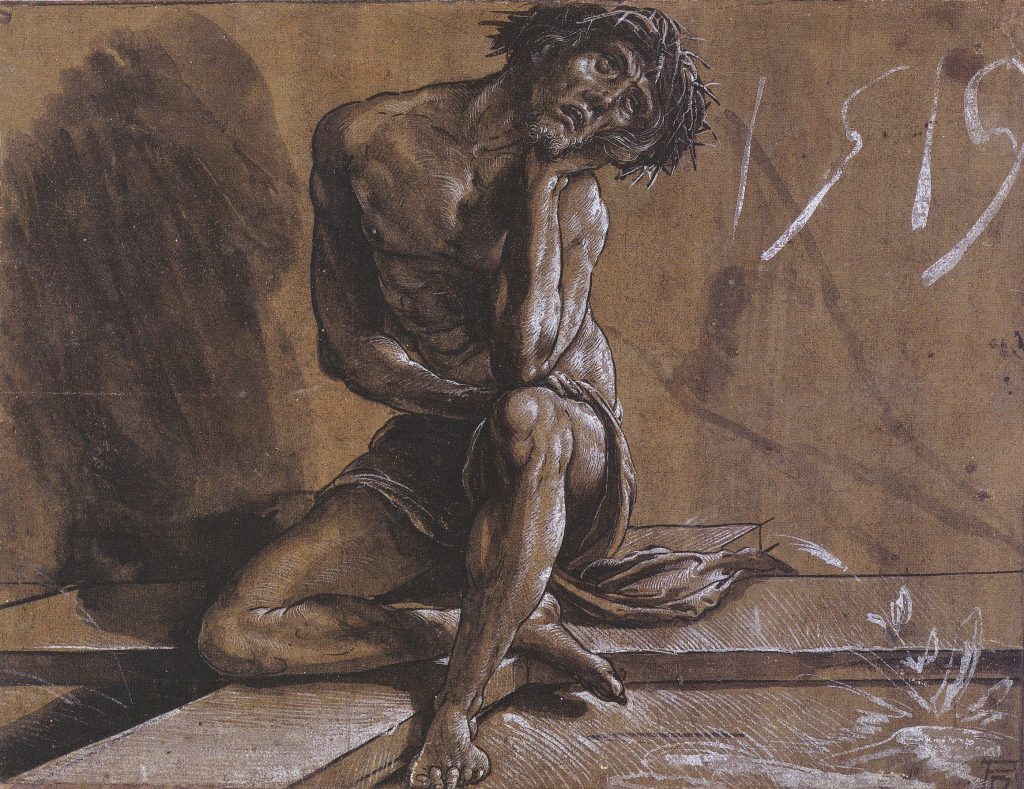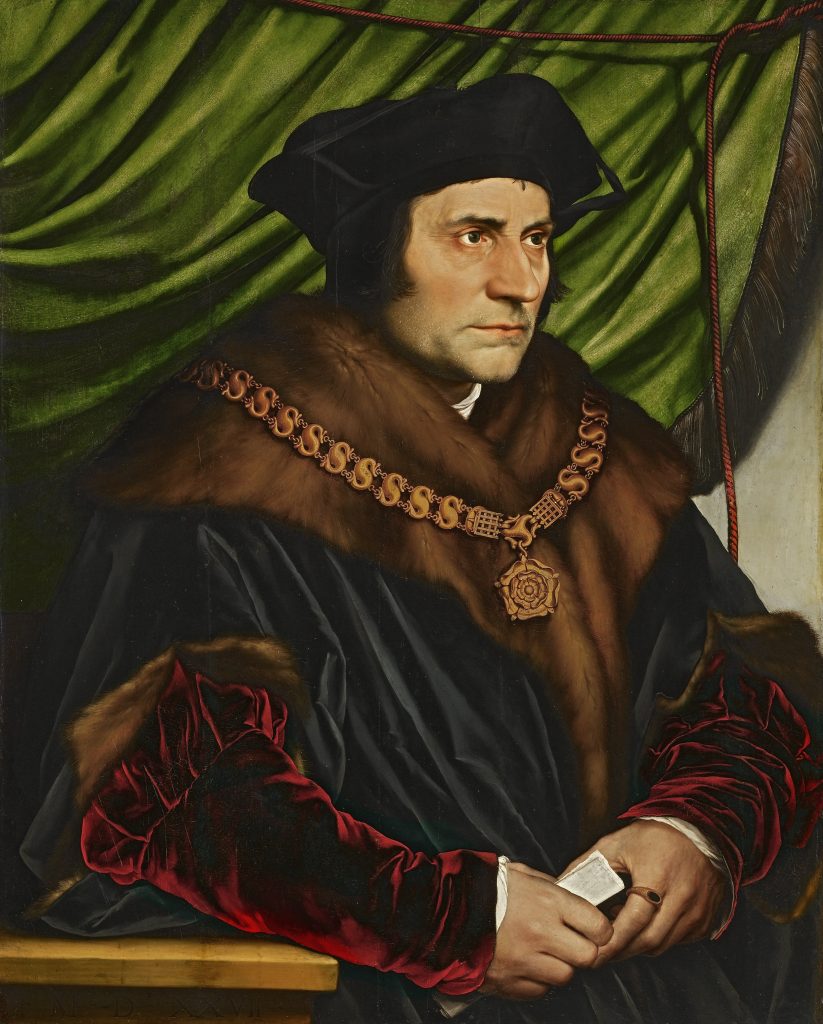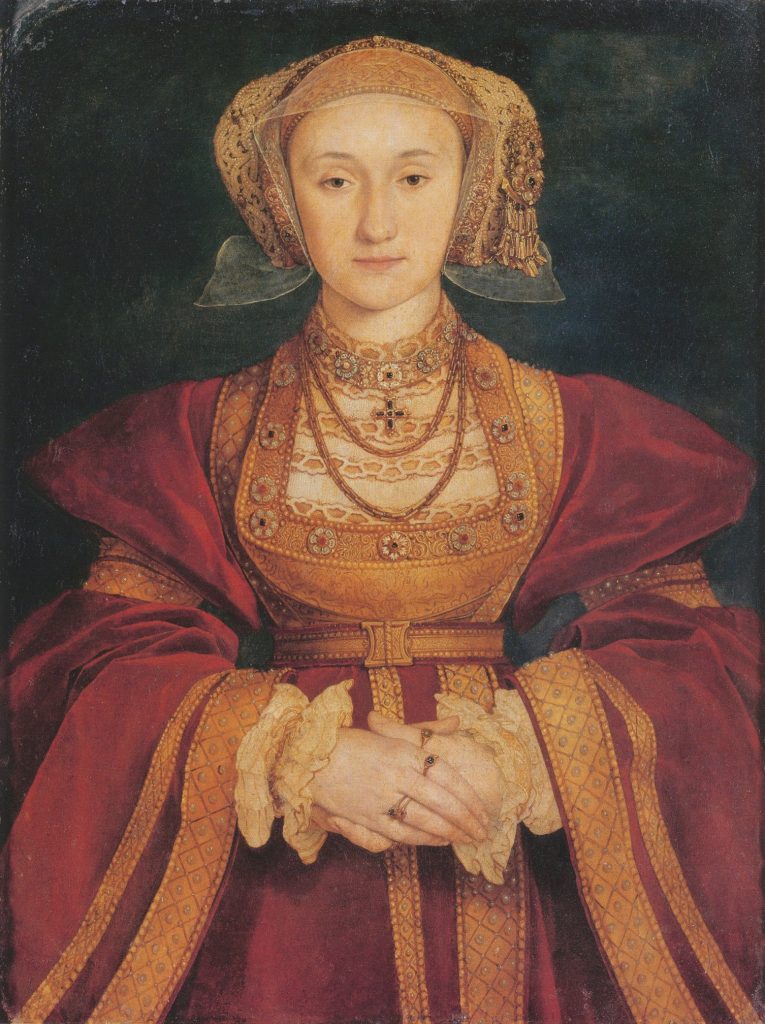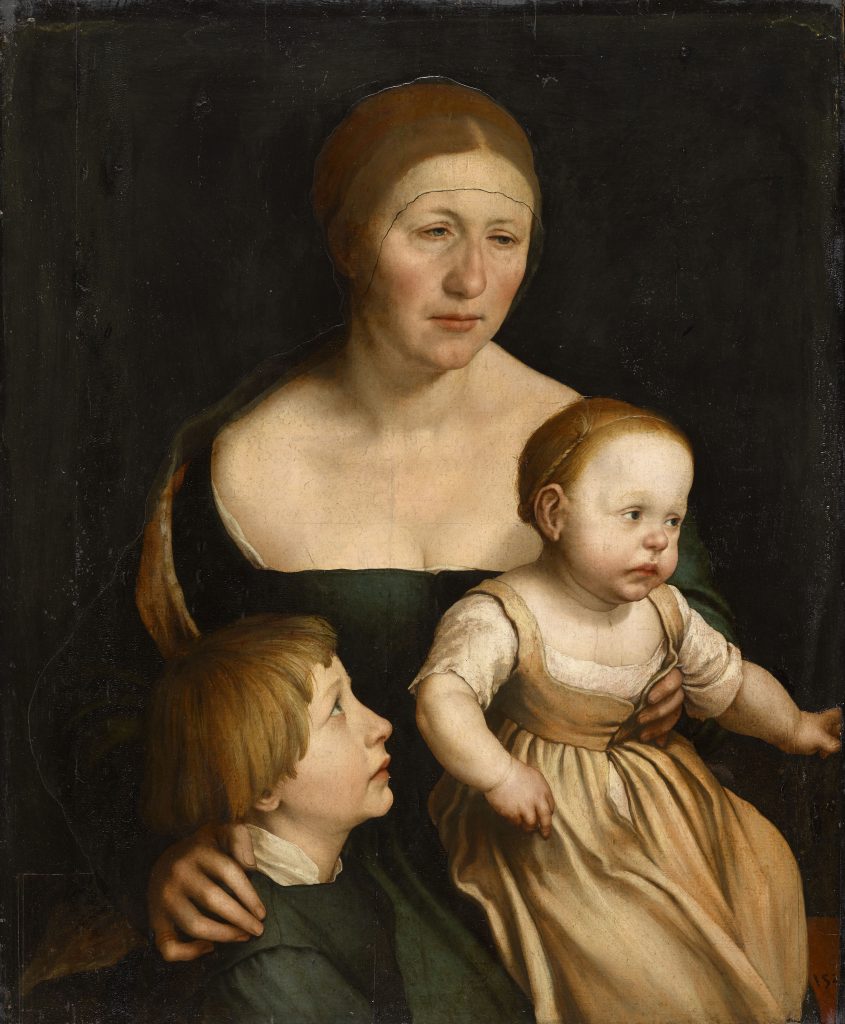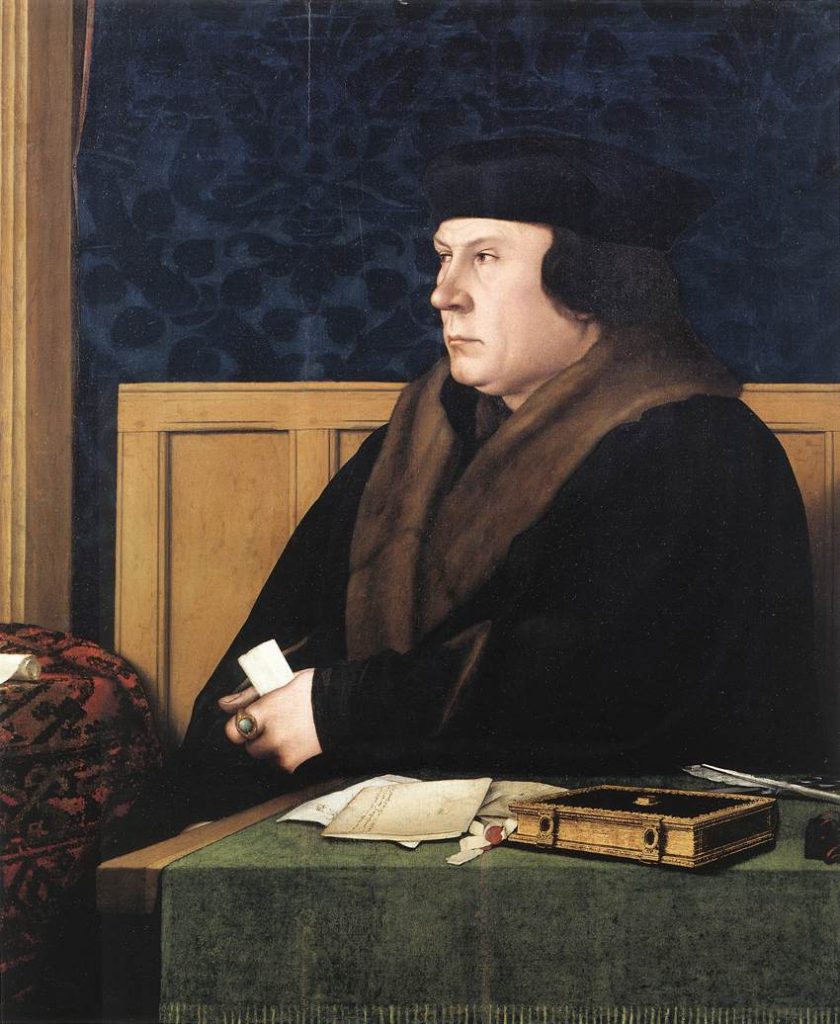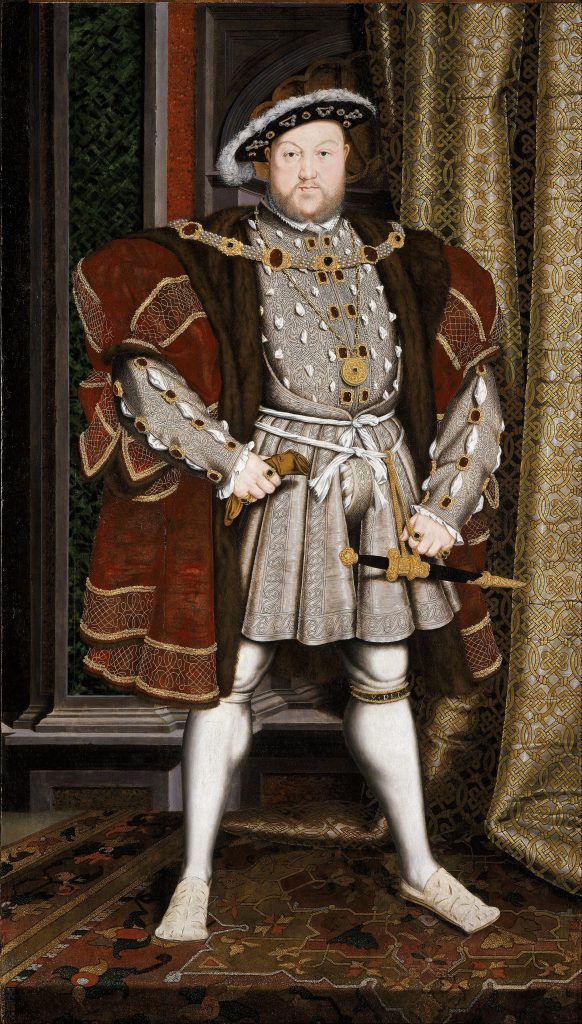Hans Holbein
Hans Holbein the Younger (c. 1497 – 1543) was a German painter and printmaker who worked in a Northern Renaissance style, and is considered one of the greatest portraitists of the 16th century. He also produced religious art, satire, and Reformation propaganda, and he made a significant contribution to the history of book design. He is called “the Younger” to distinguish him from his father Hans Holbein the Elder, an accomplished painter of the Late Gothic school.
Holbein was born in Augsberg, but he worked mainly in Basel as a young artist. At first, he painted murals and religious works, designed stained glass windows, and printed books. He also painted occasional portraits, making his international mark with portraits of humanist Desiderius Erasmus of Rotterdam. When the Reformation reached Basel, Holbein worked for reformist clients while continuing to serve traditional religious patrons. His Late Gothic style was enriched by artistic trends from Italy, France, and the Netherlands, and by Renaissance Humanism. The result was a combined aesthetic uniquely his own.
Holbein travelled to England in 1526 in search of work, with a recommendation from Erasmus. He was welcomed into the humanist circle of Thomas More, where he quickly built a high reputation. He returned to Basel for four years, then resumed his career in England in 1532 under the patronage of Anne Boleyn and Thomas Cromwell. By 1535, he was King’s Painter to Henry Vlll. In this role, he produced portraits and festive decorations, designs for jewellery, plate, and other precious objects. His portraits of the royal family and nobles are a record of the court in the years when Henry was asserting his supremacy over the Church of England.
Holbein’s art was prized from early in his career. His art has sometimes been called realist, since he drew and painted with a rare precision. His portraits were renowned for their likeness, and it is through his eyes that many famous figures of his day are pictured today, such as Erasmus and More. He was never content with outward appearance, however; he embedded layers of symbolism, allusion, and paradox in his art, to the lasting fascination of scholars.
A Lady with a Squirrel and a Starling
c.1526–1528 oil on oak wood Height: 56 cm Width: 38.8 cm
The subject of this portrait was identified in 2004 as Anne Lovell, wife of Sir Francis Lovell, who was employed at the court of Henry VIII. It has been proposed that the starling in the painting encodes a pun on the Lovell family’s seat at East Harling, Norfolk. The starling and the squirrel were traditional elements in the Lovell iconography. Holbein painted the portrait during his first visit to England, which lasted from summer 1526 to to summer 1528. it might have been done in winter, since the sitter wears a warm fur hat. During this first stay, Holbein worked largely for the circle of Thomas More and his connections, he also painted portraits of Sir Henry Guildford and Mary, Lady Guildford, with similar decorative foliage in the background. At this stage of his career, he often adapted such designs from pattern books; in his last decade he set his portrait subjects against plain backgrounds in a more iconic style. Art historian John Rowlands judges this painting “the most charming of the portraits from Holbein’s first stay in England”.
Early career
Hans Holbein was a son of the painter and draughtsman Hans Holbein the Elder, whose trade he and his older brother, Ambrosius, followed. Holbein the Elder ran a large and busy workshop in Augsburg. By 1515, Hans and Ambrosius had moved as journeymen painters to the city of Basel, a centre of learning and the printing trade. There they were apprenticed to Hans Herbster, Basel’s leading painter. The brothers found work in Basel as designers of woodcuts and metalcuts for printers. The preacher and theologian Oswald Myconius invited them to add pen drawings to the margin of a copy of “The Praise of Folly!” by the humanist scholar Desiderius Erasmus of Rotterdam. The sketches provide early evidence of Holbein’s wit and humanistic leaning. Other early works, include the double portrait of Basel’s mayor and his wife.
In 1517, father and son began a project in Lucerne, painting internal and external murals for the merchant Jakob von Hertenstein. While in Lucerne Holbein also designed cartoons for stained glass windows. The city’s records show that on 10 December 1517, he was fined five livres for fighting in the street with a goldsmith called Caspar, who was fined the same amount.
In 1519, Holbein moved back to Basel. His brother fades from the record and it is presumed that he died. Holbein re-established himself rapidly in the city, running a busy workshop. He joined the painter’s guild and took out Basel citizenship. He married Elsbeth Binsenstock-Schmid, a widow a few years older than he was, she bore Holbein a son, Philipp.
Holbein was prolific during this period in Basel, which coincided with the arrival of Lutheranism in the city. He undertook a number of major projects, such as external murals for The House of the Dance and internal murals for the Council Chamber of the Town Hall.
It was a period of revolution in book design, he illustrated for the publisherJohann Froben. His woodcut designs included those for the Dance of Death, the Icones, and the title page of Martin Luther’s bible. Through the woodcut medium, Holbein refined his grasp of expressive and spatial effects.
Holbein painted occasional portraits in Basel he also painted an altarpiece of the Madonna. In 1523, Holbein painted his first portraits of the great Renaissance scholar Erasmus, who required likenesses to send to his friends and admirers throughout Europe. These paintings made Holbein’s reputation as an international artist. He visited France in 1524, probably to seek work at the court of Francis l. When Holbein decided to find employment in England in 1526, Erasmus recommended him to his friend the statesman and scholar Thomas More.
England, 1526–1528
Holbein broke his journey at Antwerp, where he bought some oak panels. Sir Thomas More welcomed him to England and found him a series of commissions. “Your painter, my dearest Erasmus,” he wrote, “is a wonderful artist”. Holbein painted the famous “Portrait of Sir Thomas More” and another of More with his family. The group portrait, original in conception, is known only from a preparatory sketch and copies by other hands. According to art historian Andreas Beyer, it “offered a prelude of a genre that would only truly gain acceptance in Dutch painting of the seventeenth century”. Seven fine related studies of More family members also survive.
During this first stay in England, Holbein worked largely for a humanist circle with ties to Erasmus. He received many portrait commissions for well known people and courtiers, including Lady Anne Lovell. For the mathematician Kreutzer he devised a ceiling covered in planetary signs, under which visitors dined.
Basel, 1528–1532
Holbein painted Anne of Cleeves, posing her square-on and in elaborate finery. This was the woman whom Henry Vlll married with the encouragement of Thomas Cromwell in summer 1539. Henry was disillusioned with Anne in the flesh, however, and he divorced her after a brief, unconsummated marriage. It was said that Holbein’s portrait flattered Anne.
Henry said that he was dismayed by her appearance at Rochester, having seen her pictures and heard advertisements of her beauty—so much that his face fell. No one other than Henry ever described Anne as repugnant; French Ambassador thought her quite attractive, pleasant, and dignified, though dressed in unflattering, heavy German clothing. Some of the blame for the king’s disillusionment fell on Thomas Cromwell, and this was one of the factors that led to Cromwell’s downfall.
Holbein presumably returned to Basel to preserve his citizenship, since he had been granted only a two-year leave of absence. Enriched by his success in England, Holbein bought a second house in the city in 1531.
During this period in Basel, he painted The Artist’s Family, showing Elsbeth, with the couple’s two eldest children, Philipp and Katherina, evoking images of the Virgin and Child with St John the Baptist. Art historian John Rowlands sees this work as “one of the most moving portraits in art, from an artist, too, who always characterized his sitters with a guarded restraint”.
Basel had become a turbulent city in Holbein’s absence. Reformers carried out acts of iconoclasm and banned imagery in churches. They probably also destroyed some of Holbein’s religious artwork. Evidence for Holbein’s religious views is inconclusive, but he managed to retain favour under the new order. The reformist council paid him a retaining fee of 50 florins and commissioned him to resume work on the Council Chamber frescoes.
However, reduced levels of patronage in Basel prompted his decision to return to England early in 1532
England, 1532–1540
Holbein returned to England, where the political and religious environment was changing radically. In 1532, Henry VIII was preparing to repudiate Catherine of Aragon and marry Anne Bolyen, in defiance of the pope. Among those who opposed Henry’s actions was Holbein’s former host and patron Sir Thomas More, who resigned as Lord Chancellor in May 1532. Holbein seems to have distanced himself from More’s humanist milieu on this visit, the artist found favour instead within the radical new power circles of the Boleyn family and Thomas Cromwell. Cromwell became the king’s secretary in 1534, controlling all aspects of government, including artistic propaganda. More was executed in 1535.
Holbein’s commissions in the early stages of his second English period included portraits of Lutheran merchants of the Hanseatic League. The merchants lived and traded at the Steelyard, a complex of warehouses, offices, and dwellings on the north bank of the Thames. Holbein rented a house in Maiden Lane nearby, and he portrayed his clients in a range of styles.
Holbein also painted various courtiers, landowners, and visitors during this time, and his most famous painting of the period was The Ambassadors. This life-sized panel portrays Jean de Dinteville and Georges de Selve who visited London the same year.The work incorporates symbols and paradoxes, including an anamorphic skull.
No certain portraits survive of Anne Boleyn by Holbein, perhaps because her memory was purged following her execution for treason, incest, and adultery in 1536. It is clear, however, that Holbein worked directly for Anne and her circle. He designed a cup engraved with her device of a falcon standing on roses, as well as jewellery and books connected to her. He also sketched several women attached to her entourage. At the same time, Holbein worked for Thomas Cromwell as he masterminded Henry VIII’s reformation. Cromwell commissioned Holbein to produce reformist and royalist images, including anti-clerical woodcuts.
Henry VIII had embarked on a grandiose programme of artistic patronage. His efforts to glorify his new status as Supreme Head of the Church, By 1536, Holbein was employed as the King’s Painter on an annual salary of 30 pounds. In 1537, Holbein painted his most famous image: Henry VIII standing in a heroic pose with his feet planted apart.
Holbein’s portrait style altered after he entered Henry’s service. He focused more intensely on the sitter’s face and clothing, largely omitting props and three-dimensional settings. He applied this clean, craftsman-like technique both to miniature portraits and to grand portraits such as that of Christina of Denmark. The same year, Holbein went to France to paint Louise of Guise and Anna of Lorraine for Henry VIII. Holbein found time to visit Basel, where he was fêted by the authorities and granted a pension. On the way back to England, he apprenticed his son Philipp to Basel-born goldsmith Jacob David in Paris.
Last years and death, 1540–1543
Holbein had deftly survived the downfall of his first two great patrons, Thomas More and Anne Boleyn, but Cromwell’s sudden arrest and execution on trumped-up charges of heresy and treason in 1540 undoubtedly damaged his career. Though Holbein retained his position as King’s Painter, Cromwell’s death left a gap no other patron could fill. It was, ironically, Holbein’s portrait of Anne of Cleeves which largely led to Cromwell’s downfall: furious at being saddled with a wife he found entirely unattractive, the King directed all his anger at Cromwell. Granted, Cromwell had exaggerated her beauty, but there is no evidence that Henry blamed Holbein for supposedly flattering Anne’s looks.
Apart from routine official duties, Holbein now occupied himself with private commissions, turning again to portraits of Steelyard merchants. He also painted some of his finest miniatures, and managed to secure commissions among courtiers who now jockeyed for power.
Holbein may have visited his wife and children in late 1540, when his leave-of-absence from Basel expired. The state of Holbein’s marriage has intrigued scholars, who base their speculations on fragmentary evidence. Apart from one brief visit, Holbein had lived apart from Elsbeth since 1532. His will reveals that he had two infant children in England, of whom nothing is known except that they were in the care of a nurse.
Holbein’s unfaithfulness to Elsbeth may not have been new. Whatever the case, it is likely that Holbein always supported his wife and children. When Elsbeth died in 1549, she was well off and still owned many of Holbein’s fine clothes; on the other hand, she had sold his portrait of her before his death.
Hans Holbein died between 7 October and 29 November 1543 at the age of 45. Some speculate he died of plague but more likely he died of an infection. Describing himself as “servant to the king’s majesty”, Holbein had made his will on 7 October at his home in Aldgate.
Holbein may have been in a hurry, because the will was not witnessed by a lawyer. On 29 November, John of Antwerp, the subject of several of Holbein’s portraits, legally undertook the administration of the artist’s last wishes. He presumably settled Holbein’s debts, arranged for the care of his two children, and sold and dispersed his effects, including many designs and preliminary drawings that have survived. His grave may never have been marked but the churches of St Katherine Cree or St Andrew Undershaft in London are possible locations, being located near to his house.
Sources: The National Gallery, London, Wickipedia, Wickimedia Commons


